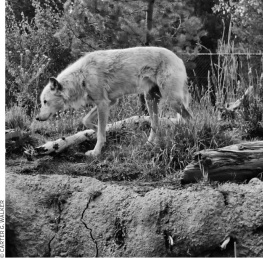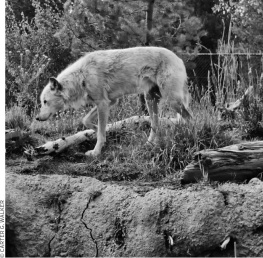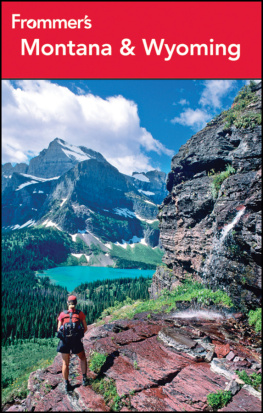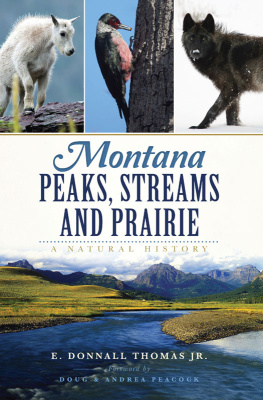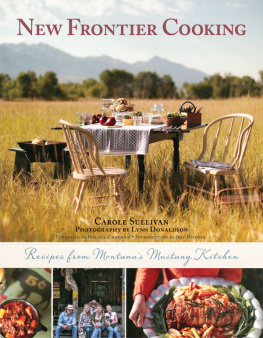
Copyright 2013 by Gordon and Cathie Sullivan
All rights reserved. No part of this book may be reproduced in any form or by any electronic or mechanical means including information storage and retrieval systems without permission in writing from the publisher, except by a reviewer, who may quote brief passages.
Maps by Paul Woodward, The Countryman Press
Book design and composition by S. E. Livingston
Photographing Montana
ISBN 978-1-581-57158-5
ISBN 978-1-581-57763-1 (e-book)
Published by The Countryman Press,
P.O. Box 748, Woodstock, VT 05091
Distributed by W. W. Norton & Company, Inc.,
500 Fifth Avenue, New York, NY 10110
Printed in the United States of America

The rule of thirds helps emphasize Glacier National Parks Heavens Peak resting placidly beneath wispy clouds. Either the clouds or the mountains by themselves are interesting; balanced by the rule of thirds, they create a powerful image emphasizing the complement of sky and landscape.
We are grateful to those individuals who first recognized the need to protect wild places, and we dedicate this book to the people who work day in and day out to keep Montana wild, wonderful, and filled with open spaces to be enjoyed by all. Our livesand our photographswould be far less remarkable without you.





Cabinet Mountain Wilderness Area from the Bull Valley

First light of morning just minutes after sunrise strikes Heavy Runner Mountain in Glacier National Park. The light enters from the side after clearing adjacent peaks.
Introduction
In Travels with Charlie, John Steinbeck wrote, I am in love with Montana. For other states I have admiration, respect, recognition, even some affection, but with Montana it is love, and it is difficult to analyze love when you are in it It seems to me that Montana is a great splash of grandeur. The scale is huge but not overpowering. The land is rich with grass and color, and the mountains are the kind I would create if mountains were ever put on my agenda Montana has a spell on me.
Montana natives can appreciate Steinbecks sentiment, even if to us it might seem understated. Certainly there are times when this huge, breathtaking landscape is overpowering, especially when combined with a rich serving of history. There are times when the huge dome of sky above us glows with eastern light and casts an enchanting blush across rugged mountains, lush meadows, and ghost towns a century silent. There are times when the stark badlands dazzle in a palette of color that tests the imagination, times when crystal-clear highland waters flow frigid enough to numb your fingers, and times when things just seem to stand still, waiting for the creative muse to catch up. And then come the changing seasons, entire mountainsides dressed in finery, autumn changing to winter, winter to spring. And oh, that big Montana sky, its photogenic clouds a gift from the Pacific Ocean hundreds of miles west. Water vapor above the ocean is swept inland on warm Pacific winds, rising to form clouds. Arriving at the steep rise of the Rocky Mountains, the clouds are halted, held ransom for valuable moisture. The skies here provide an incredible backdrop for outdoor photography.

Absaroka-Beartooth Range. Here is an image taken in warm, midmorning light. The sun was just breaking over the eastern ridge, producing subdued shadows in the canyon below.
Certainly any photographer who has traveled Montana will say that in its hugeness, wildness, and rock-hard resilience, the place is overpowering. For those of us who live and work here, it is much more than a splash of grandeur: it is an intricate part of us, a staggering 147, 138-square-mile canvas stretched between the high Rocky Mountains and the vast northern plains, a canvas of splendor.
Montanas Landscape
From east to west, Montana spans an average of 535 miles, and from north to south, 275 miles. Within this great expanse less than one million people live, half as many as in metropolitan Seattle. Aside from its geographic immensity and modest population, elevation plays a significant role. Montanas lowest point dips to 1,800 feet where the Kootenai River spills westward across the Idaho border. Meanwhile, on the other side of the state, in the Absaroka-Beartooth Wilderness, Granite Peak rises 12,799 above sea level. Between these two geographic points every life zone found in the West is present, spanning the scale from desert to alpine.
If anything, our homeland is one of extremes. Two-thirds of our landmass consists of open plains, grassland prairies, and desert-like badlands reaching westward for hundreds of miles from the Dakota line. Eventually the plains give way to the Rocky Mountains and the perpendicular rise of the Continental Divide, which separates east from west and waters bound for two distinct oceans, the Pacific and the Gulf of Mexico.
Included within Montanas state lines are 15 federally designated wilderness areas, two national parks, 20 National Wildlife Refuges, a long list of state and community parks, hundreds of miles of wild and scenic rivers, national monuments dedicated to the preservation of wild lands, and more roadless terrain than any photographer could capture in a single lifetime. Sixty-seven different mountain ranges make up our highlands, with 13 boasting peaks over 10,000 feet, 60 over 11,000 feet, and 27 towering above 12,000 feet.
Travelers heading west across the plains encounter outlier mountain ranges long before arriving at the Rocky Mountains. Many in the state consider these outliers more captivating and picturesque than the larger Rockies, a judgment we leave to the photographer. Like the Rockies, the outliers tend to wrinkle north to south across the states face. Many spawn remarkable prairie rivers: the Bighorn, Stillwater, Musselshell, Boulder, Shields, and the historic La Roche Jaune, or Yellowstone, to name just a few. The Yellowstone alone drains a staggering 70,000-square-mile slice of wild country and matures inside Americas first national park. Leaving the park, the river courses northward through Paradise Valley, swings eastward at Livingston, and finally back north en route to its confluence with the Missouri River, just across the North Dakota border.


